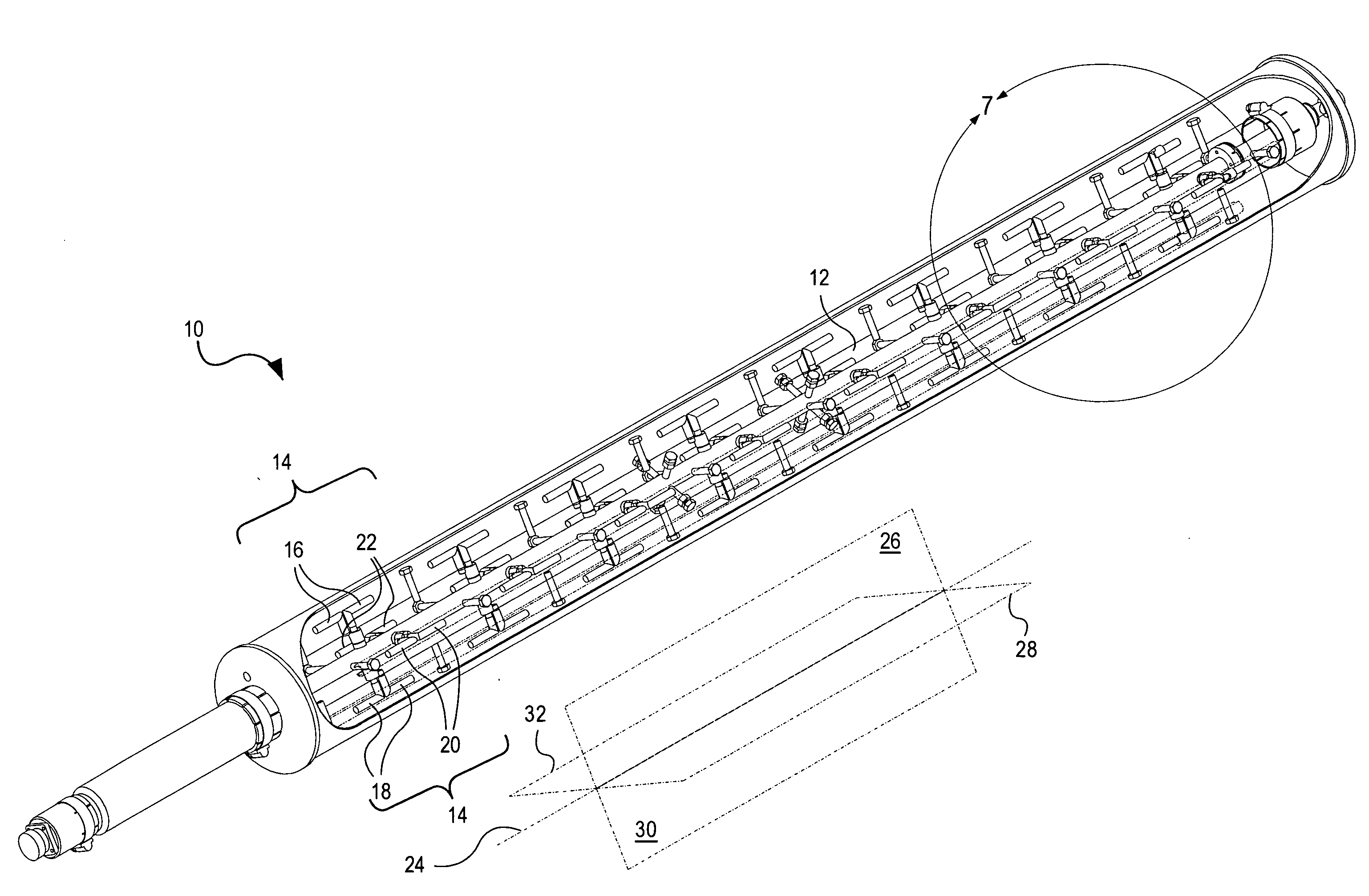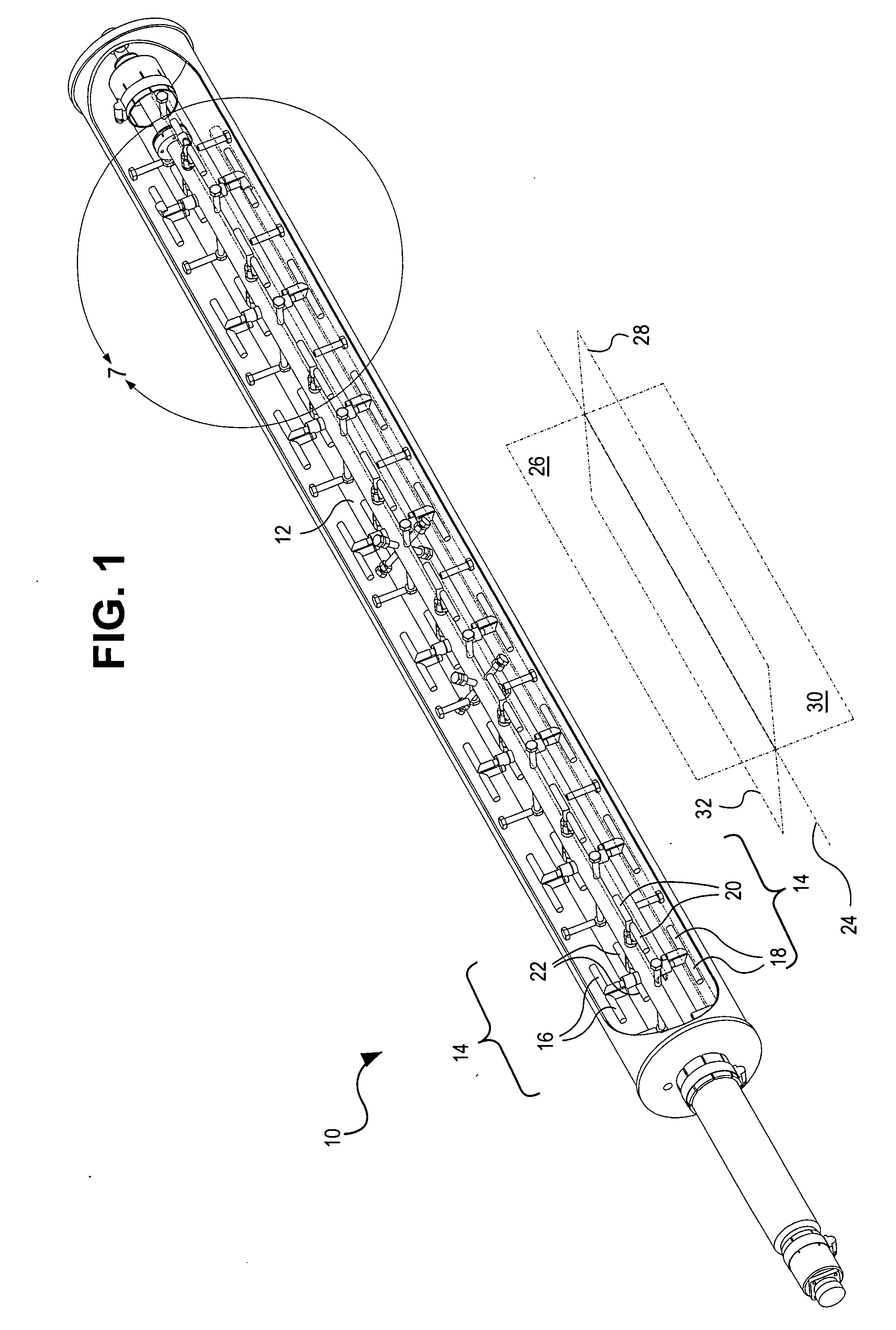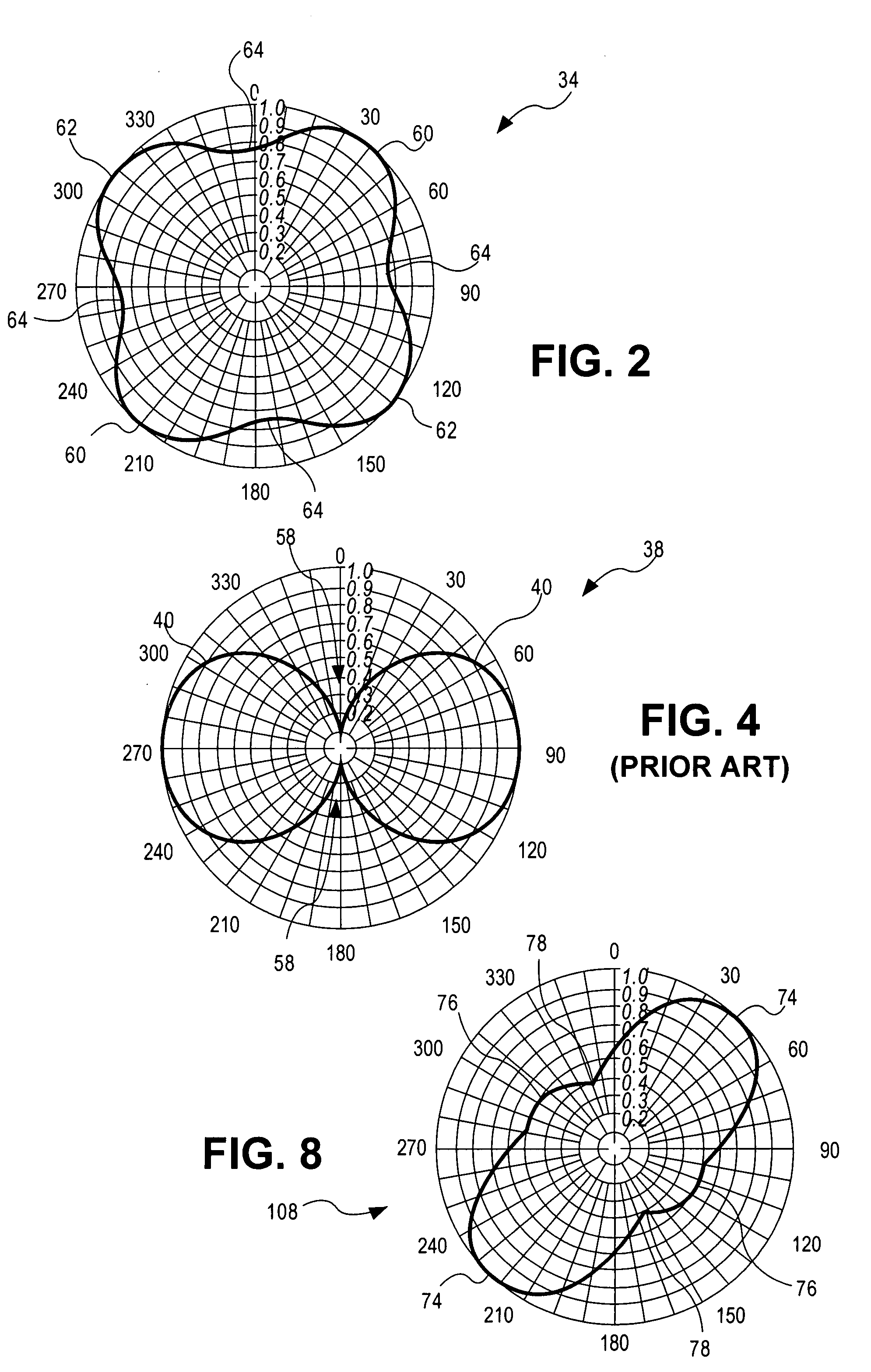System and method of producing a null free oblong azimuth pattern with a vertically polarized traveling wave antenna
a traveling wave antenna and null free technology, applied in the field of radio frequency electromagnetic signal broadcast antennas, can solve the problems of limited beam tilt capability, unidirectional panels, and limited knowledge of antennas for providing such patterns, and achieve the effect of moderate power capability and simple mechanical construction
- Summary
- Abstract
- Description
- Claims
- Application Information
AI Technical Summary
Benefits of technology
Problems solved by technology
Method used
Image
Examples
Embodiment Construction
[0037]The invention will now be described with reference to the drawing figures, in which like reference numerals refer to like parts throughout. The invention provides an apparatus and method that in some embodiments provides an antenna that supports a substantially single-axis, null-free, vertically-polarized propagation pattern with high gain and moderate power handling capability.
[0038]FIG. 1 shows a multiple-bay antenna 10 according to one embodiment of the invention. The antenna 10 uses a self-supporting, vertical, straight coaxial line (coax) 12 to couple a signal between a feed line and multiple radiating elements in the form of a traveling wave. At each bay 14, a first dipole 16 and a second dipole 18 are positioned on opposite sides of the coax 12, with the second dipole 18 inverted with respect to the first dipole 16, so that the polarities of the radiated signals are opposite. It is noted that the cylindrical and effectively grounded outer conductor of the coax 12 is int...
PUM
 Login to View More
Login to View More Abstract
Description
Claims
Application Information
 Login to View More
Login to View More - R&D
- Intellectual Property
- Life Sciences
- Materials
- Tech Scout
- Unparalleled Data Quality
- Higher Quality Content
- 60% Fewer Hallucinations
Browse by: Latest US Patents, China's latest patents, Technical Efficacy Thesaurus, Application Domain, Technology Topic, Popular Technical Reports.
© 2025 PatSnap. All rights reserved.Legal|Privacy policy|Modern Slavery Act Transparency Statement|Sitemap|About US| Contact US: help@patsnap.com



